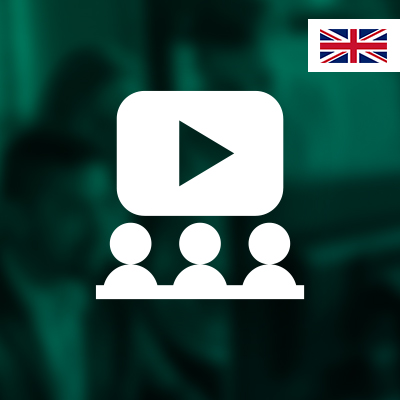Features
Expert interview
What happens after the end of SolMan maintenance?
Future-proofing SAP Change Management: insights from practice
An interview with Torsten Thal about the end of SAP Solution Manager, the opportunities of third-party tools, the transfer of legacy data from SAP ChaRM and the new role of ITSM tools in the SAP context
The end of maintenance for SAP Solution Manager is more than just the end of a tool. It is an opportunity to rethink SAP change processes in a new and integrative way. What used to run via SAP ChaRM now needs new approaches.
For many IT organizations, the end of SolMan means the end of an era combined with the realignment of their established Change Management processes.
We spoke to Torsten Thal, Project Manager at REALTECH, who is supporting numerous SAP customers with this transformation. In this interview, he explains how this changeover can succeed and why SmartChange with integration into ITSM tools such as ServiceNow and Jira is a realistic, future-proof ChaRM alternative.
Torsten, many companies are now aware that SAP Solution Manager will soon no longer be supported. Nevertheless, many are hesitant to replace it. Why do you think that is?
Because SolMan has been an integral part of the SAP system landscape for almost 20 years. Companies have set up their change processes there, often with considerable configuration effort, which was associated with high costs. There are entire departments that are responsible for SAP Solution Manager.
Now we see: SAP offers an alternative with Cloud ALM, but many companies are not (yet) ready for a complete cloud migration. Be it for technical, regulatory or strategic reasons.
The reality for many customers is hybrid and requires flexible, connectable alternatives that will be in use for many years to come.
What is the current situation in customer projects?
“Chaos” sums it up quite well. What surprised me: Many companies know that SolMan will have to be replaced in 2027, but they underestimate how much infrastructure, processes and compliance issues are involved. SAP doesn’t offer a seamless transition for everything, so quick action is required here. If SAP ChaRM was used, for example, the question is: what happens to all the information stored in the change documents and transports?
REALTECH shows an alternative way with the integration of ServiceNow or Jira. Why is integration so attractive?
Many companies have long been using ServiceNow or Jira as ITSM tools for tickets or Release Management. With the integration in SmartChange, we are now also bringing SAP transports directly into this familiar environment. This means that transports can be created, released, tracked and imported via ServiceNow and Jira – fully integrated in SAP and without having to switch systems. This saves time, reduces sources of error and makes the entire process much more transparent.
Our customers are rarely interested in mapping SAP ChaRM 1:1. Instead, they are looking for lean, flexible alternatives that fit in well with their existing IT processes.
Today, our customers no longer want an isolated SAP world. They expect end-to-end, integrated workflows in which SAP and the rest of the IT landscape work together seamlessly. This is exactly what we achieve with SmartChange: the SAP transport process becomes part of the real IT tool landscape – without media disruptions, without Excel lists, without e-mail approvals.
And how deep does this integration go technically?
The integration is based on OData services and REST APIs and enables direct bidirectional communication between SAP and ServiceNow, Jira or other ITSM tools. We can even configure the functionalities via the integrated ITSM tools so that SAP transports are triggered in the ITSM interface. The user decides whether to work in the ITSM tools or in SmartChange – depending on what suits the process or team better.
Transport statuses such as “released”, “imported” or “QA completed” are displayed in real time in the ITSM ticket. Actions such as transport release or approvals can be triggered directly from ITSM.
It is also important to note that we now predominantly use the SAP Cloud Connector to connect ITSM systems to SAP. Many customers prefer this solution as it is considered much more secure and controllable from a security perspective than logging into the SAP system directly via the SAP WebGUI.
What has particularly surprised you in projects?
Some customers still manage their SAP transports using Excel lists and email approvals. This sounds banal at first, but in a complex SAP landscape with multiple systems and critical processes, replacing these manual and error-prone processes is a huge gain.
What many also underestimate: Many companies use CTS+ to manage non-ABAP transports. The discontinuation of SAP Solution Manager creates gaps here. CTS+ remains technically intact, but without SAP ChaRM there is no central control. Another point that many do not initially have on their radar.
And what does this look like in practice? Is there an example?
A large food manufacturer had thousands of change documents from SAP ChaRM, numerous open transports and a release process for its changes that had grown over decades. Within a short project, we implemented SmartChange, connected the customer’s existing ServiceNow system and completed the integration. This involved extracting and migrating the historical SAP ChaRM data. Today, all changes are controlled via ServiceNow, while SmartChange carries out the transports in the background.
For many, migration sounds like a “giant project”…
But it doesn’t have to be if you set it up correctly. We extract the SAP ChaRM data in a targeted manner. Together with the customer, we determine in advance which information has to be transferred and where it has to be archived or migrated. This keeps the entire process structured and manageable.
How does the migration from SAP ChaRM actually work?
We extract the data directly from the Solution Manager. This is archived in a structured manner. This data can be migrated to SmartChange in parallel with the SmartChange implementation. Optionally, active transports can also be assigned to ITSM tickets. The aim is that the customer does not lose any information. A typical project is divided into three parallel streams:
- SmartChange implementation in the SAP system
- Connection of the ITSM tool: In 80% of cases this is Jira or ServiceNow, but also other ITSM tools such as Azure DevOps (ADO) or our own ITSM tool REALTECH SmartITSM.
- Extraction/Migration of SAP ChaRM data: including the option to import historical transports into the SmartChange history
How time-consuming is the implementation in practice?
SmartChange can be implemented within 2-3 weeks. Of course, if the customer has a complex landscape with many SIDs, special aspects, etc., it can take longer. Sometimes it is also the customer’s wish to have a test period of 4-6 weeks.
Depending on the depth to which the ITSM tool is to be integrated, this also takes some time. Especially if the customer comes from the “old” SAP Solution Manager world, it always takes a little time to reschedule the workflows together and redesign their processes.
Of course, the timeframe also depends on how well prepared the company is, but with clear planning and the right approach, this can be realized very efficiently.
Find out more about typical pitfalls and how you can save up to 4 weeks of project time in the Best Practice Guide for SAP-ITSM Integration.
What advice would you give to companies that are still working with SolMan today?
Don’t wait any longer. 2027 still seems a long way off, but in IT project time that is a short cycle. The Solution Manager has served well for a long time, but many companies also know that it is complex, cumbersome and outdated. It is also time-consuming and expensive to maintain.
The SAP Cloud is being pushed massively by SAP. However, the fact is that hybrid landscapes will continue to play a major role for most customers over the next 5-10 years.
Switch now to a modern, fully integrable solution such as REALTECH SmartChange. In combination with an existing ITSM tool, SmartChange enables a seamless transition to a future-proof solution. Those who have been using SAP ChaRM up to now will not lose any history and those who want more automation will get it without compromising on governance or compliance.
Our experience shows: The introduction of REALTECH SmartChange with ITSM integration is structured and fast. Our customers frequently confirm that the step is worthwhile and benefits are immediately noticeable.

Torsten Thal supports companies in the transition from SAP Solution Manager and in the implementation of future-proof SAP change processes. His experience from numerous projects flows into best practices and modern integration approaches.


